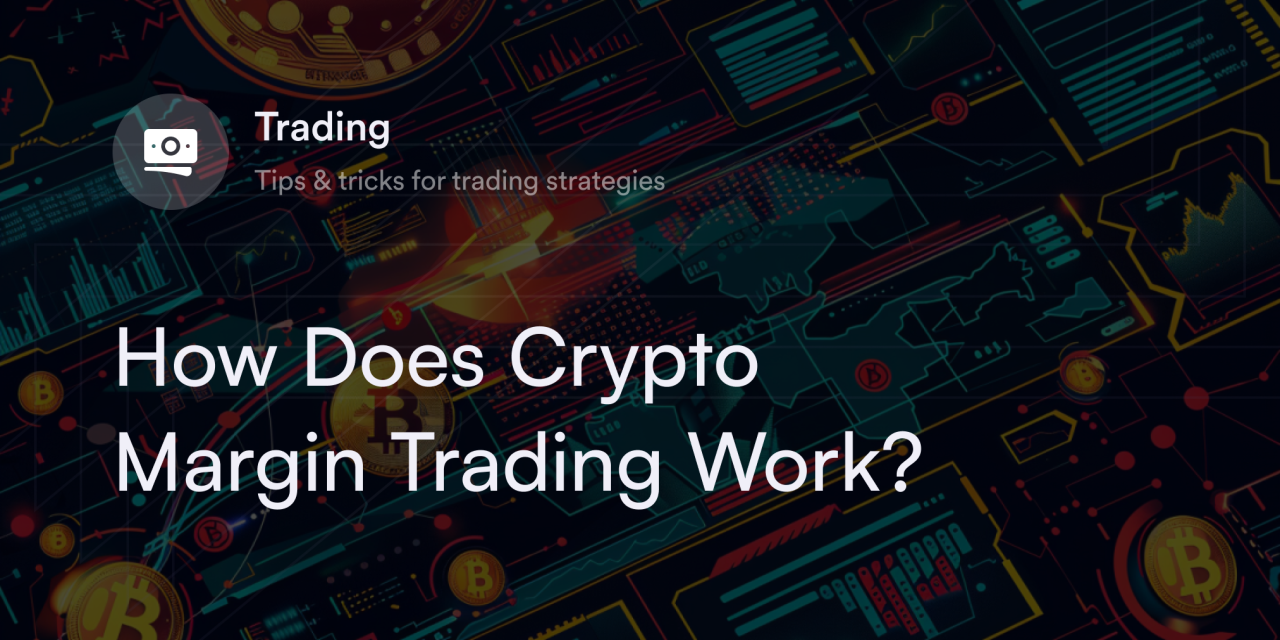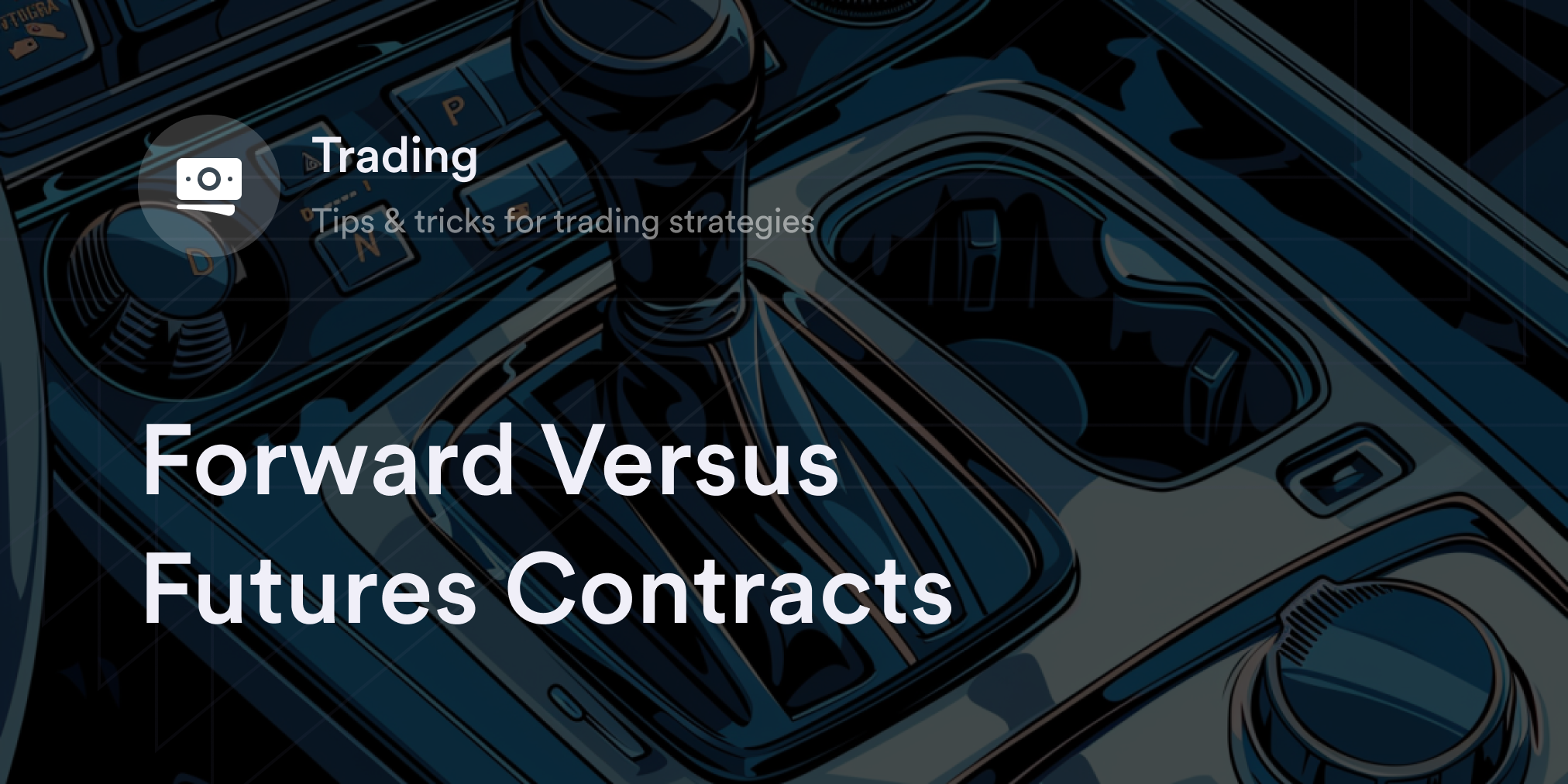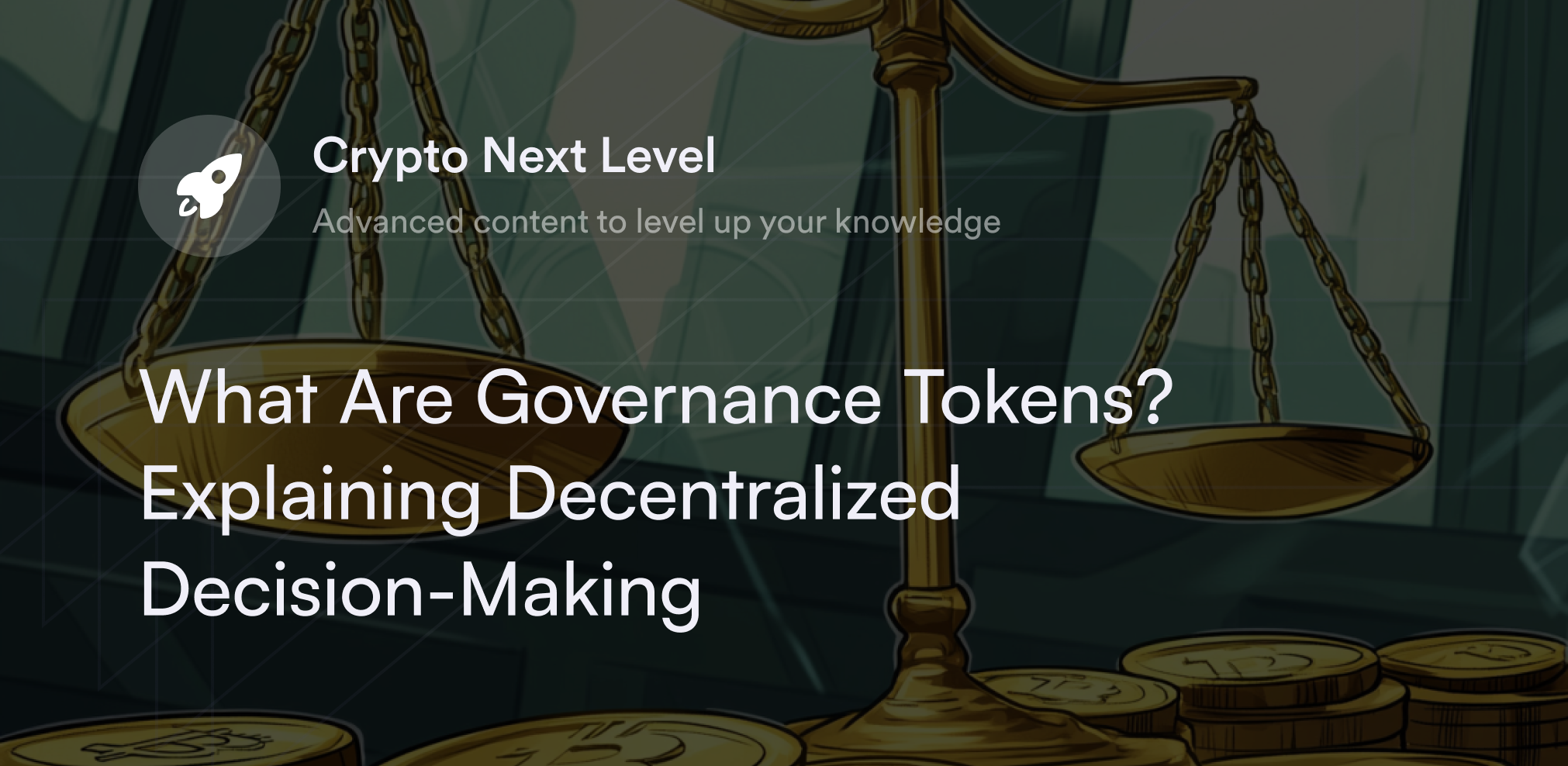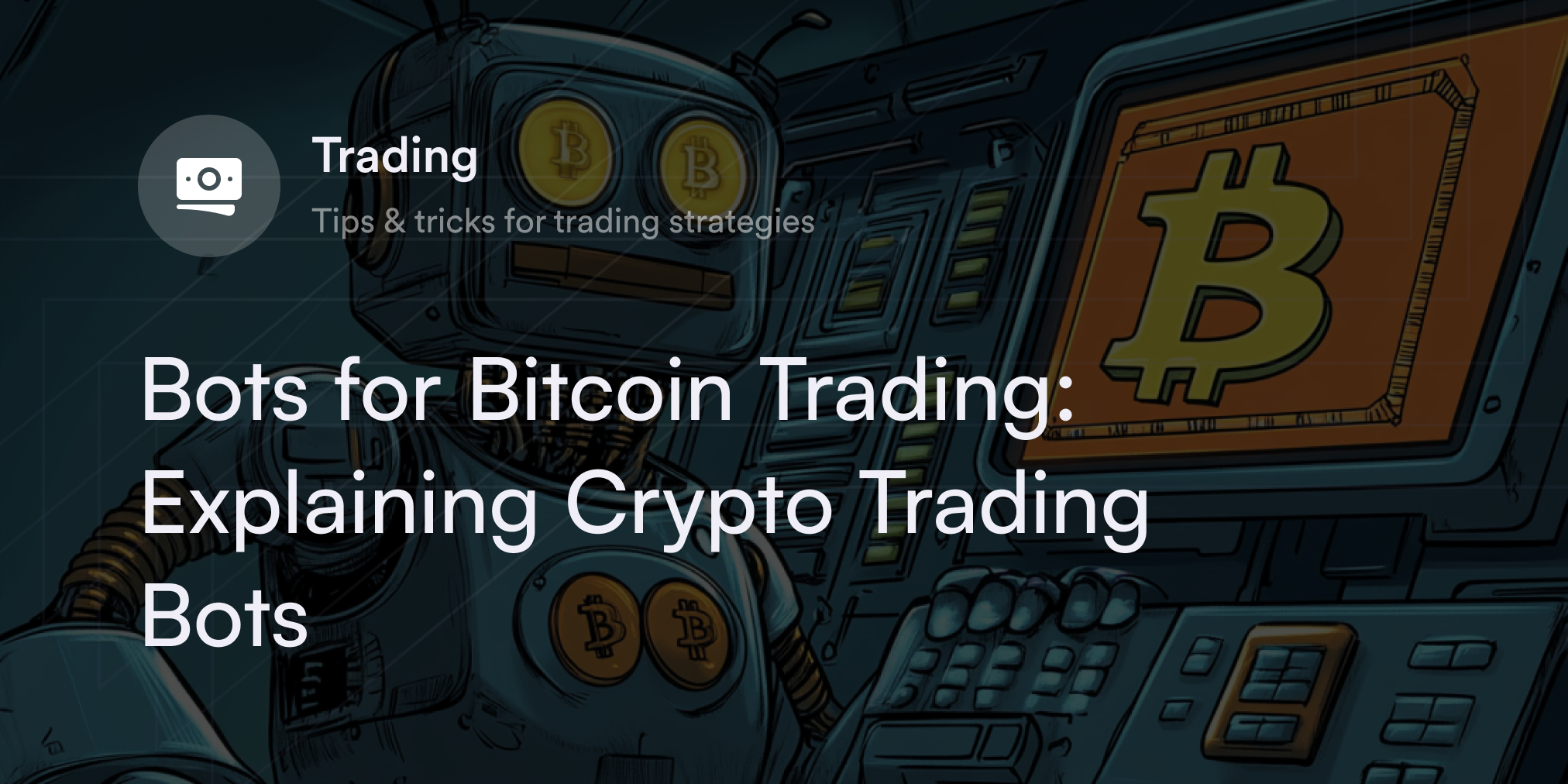


Of the dozens of trading tools available on cryptocurrency exchanges, “margin” is one of the most requested—and risky.
Although margin trading isn't new to the cryptocurrency ecosystem, it’s become increasingly prevalent on centralized trading platforms as well as on decentralized exchanges like dYdX. Traders with margin accounts can easily use leveraged exposure to adjust their position size quickly. However, without proper risk management skills, crypto margin trading can wipe out a trader's portfolio.
While margin trading is a powerful technique with benefits, knowing how to use it responsibly is essential given the substantial risks involved. Traders considering adding margin to their toolkit must fully understand its benefits and risks before opening an account.
What is Margin Trading in Cryptocurrency?
Margin trading is a high-risk strategy in which traders incur greater exposure by taking positions that exceed the amount of their initial deposit.
The term "margin" refers to that deposit, which acts as cash collateral a trader needs in their account or smart contract to incur greater exposure. As long as a trader has the minimum required initial margin in their exchange account or smart contract, they can take positions that exceed the amount of the initial margin. For example, dYdX has an initial margin requirement of 5% for Bitcoin perpetuals contracts, meaning eligible traders need to deposit 5% of the total value they want to have in exposure in the smart contract before they can start margin trading.
Margin trading is sometimes called "leverage trading," but there’s an important distinction between the two terms. "Margin" is the money traders need to access a greater amount of exposure, while "leverage" is the portion of exposure that a trader can incur in excess of the margin amount deposited in their account or smart contract.
Leverage is often expressed as a ratio or multiplication factor that shows how much a person has exposure to. For example, a 1:20 or 20x leverage position means the trader has exposure of 20 times the margin amount in their account or smart contract. So, if this person deposited $100 on an exchange and requested 20x leverage, they would have a $2,000 position.
How Does Margin Trading Work in the Cryptocurrency Market?
Exchanges that offer leverage have different minimum margin requirements traders must meet to incur more exposure. Typically, this initial deposit is expressed as a percentage (e.g., 5%) of a trader’s desired position size. If margin traders have enough money in their account or smart contract, they request a leverage position to multiply their holdings instantly. That said, eep in mind that traders who use margin increase the price fluctuations of their portfolio by whichever leverage setting they choose. For example, a 10x leverage position on Bitcoin means every 1% move in BTC's market price is a 10% move for people using leverage. In simple terms, if the price of Bitcoin (BTC) goes up by $1 in the crypto market, the trader would see a $10 gain in the leveraged account. On the other hand, if the price dips by $1, the account is on the hook for a $10 loss.
Since the gains and losses are magnified for leverage traders, exchanges use a "maintenance margin percentage" that traders must always meet to avoid “liquidation”, which happens when an exchange closes a leveraged account and claims the initial margin. Put differently, “maintenance margin" is the amount of capital a trader needs in their account or smart contract to keep their trade open.
Some exchanges send alerts known as "margin calls" whenever traders are at risk of liquidation. In this scenario, the trader must add more funds to their margin account to increase their maintenance percentage. If traders don't adjust their maintenance margin in time, they could lose their entire portfolio. On the dYdX platform, however, liquidations are automatic as this feature is built into the smart contract. This means that if the trader doesn’t have available funds to increase their margin deposit, they face liquidation and the loss of their initial margin as a result.
Margin Trading Versus Spot Trading
Cryptocurrency spot trading means buying and selling digital assets at the current market price on a centralized or decentralized cryptocurrency exchange. People who trade on the spot market cannot increase their exposure by taking a position that exceeds the funds they deposited. Instead, spot traders purchase digital assets like Bitcoin (BTC) or Ethereum (ETH) on a cryptocurrency trading platform and store them on their exchange account or in a private wallet. In every spot trade, digital assets are exchanged directly between wallets.
Margin trading, on the other hand, always involves taking positions that exceed a person’s initial deposit in their account or smart contract. This strategy also grants traders access to derivative products such as futures, forwards, and perpetuals. Cryptocurrency derivatives track an underlying asset’s price without directly exchanging coins and tokens. Instead, derivative traders enter contractual agreements speculating on the future price of a digital currency.
Why Would You Use a Crypto Margin Trading Strategy?
Given all the risks and requirements associated with margin trading, some may wonder why traders bother with leveraged trading accounts. Although this type of trading isn’t for the risk-averse, it offers advanced traders more options and flexibility in the cryptocurrency market.
Potential benefits of margin trading
Increased portfolio exposure: Traders can take out a substantial position on margin without large amounts of capital. If people see a trade set-up they want to take advantage of, they can profit more with a leverage position than a spot trading account. But remember, because of the multiplying effect of margin trading, there is a greater potential for loss as well.
The choice to long or short: On a standard spot market account, traders can only buy and hold cryptocurrencies they believe will increase in value. However, margin traders have access to short positions, meaning they have the option to possibly profit from an asset’s price declines, too.
No need to store assets: If margin traders use derivatives products such as options or futures, they aren't directly trading cryptocurrencies. Therefore, margin traders can bet on the prices of virtual assets without worrying about storing cryptocurrency.
Risks of margin trading
Risk of liquidation: When leverage traders have less than the required maintenance margin in their account, they’re at risk of liquidation. This means that, unlike trading cryptocurrencies on the spot market, an asset doesn't have to fall to zero for margin traders to lose everything.
Extreme price volatility: “Volatility” is how fast and far an asset’s price tends to move. Cryptocurrencies are already considered extremely volatile assets, meaning they experience significant price movements in short timeframes. Adding margin trading to a crypto position increases the volatility of a trade even further. Only traders who can stomach extreme price swings are right for leveraged positions.
Associated fees: Some exchanges charge extra fees for using leverage, which eats into a trader’s profits. On some platforms, margin trades also cost additional commission fees for each transfer.
Potential for greater losses: Margin traders could have their position closed out at a loss, potentially a substantial loss. As discussed above, losses will be magnified by the leverage above the amount of initial margin or the fact that the customer may be subject to a forced liquidation, potentially with substantial losses.
How to Help Mitigate Risk when Trading Cryptocurrencies on Margin
Margin trading is an inherently risky practice and traders should set out exactly how much they’re willing to lose and what they’ll do if a trade doesn’t turn out in their favor. Skilled leverage traders keep a close eye on their maintenance requirements and constantly monitor the crypto market to avoid a margin call or automatic liquidation. Certain strategies can help traders manage risk. Here are a few examples:
Set stop losses: A "stop loss" is a buy or sell order that automatically fills for a particular asset at a specific price. For example, if a trader sets a stop loss to sell 1 Bitcoin at $15,000, their exchange account or smart contract will automatically sell BTC when it reaches this price. Margin traders set stop losses on their long and short trades to instantly get out of losing positions if the market turns against them. Since these orders trigger at pre-set prices, traders don't need to monitor their accounts to sell off positions before liquidation. Traders should keep in mind, however, that if the price fluctuation happens very rapidly, a stop loss order might not be executed and loss will not be limited to the threshold set by the trader as a result.
Study technical analysis: Margin traders should carefully consider short-term price levels and chart patterns to help estimate the gains and losses in a trade. One way to determine these crucial price levels is to research standard technical analysis tools such as moving averages, trendlines, and Fibonacci retracements. The more traders know about technical analysis, the better equipped they are to set precise limit orders when using margin. Traders should remember, as mentioned above, that cryptocurrencies are extremely volatile assets to begin with, and adding margin trading increases volatility even further. Technical analyses, therefore, can be of limited help in attempting to predict price movements of these assets and should not be viewed as reliable tools.
Use margin in moderation: Using the highest leverage setting when trading on margin is tempting, but these high percentages can be too much for inexperienced traders as they have the potential to lead to colossal losses. People new to margin trading can start with smaller leverage positions of 2x or 3x as they learn how to craft their strategies and only move up to higher leverage amounts after gaining experience in the cryptocurrency markets and clearly setting out the amounts that they are willing to lose.
Access 20x Leverage on dYdX
dYdX wants traders to fully understand the benefits and risks of trading strategies in the cryptocurrency space. Before adding leverage to a position, we encourage you to read about the risk of incurring substantial losses by using leverage as a trade strategy explained above and to read through the dozens of educational guides on our Academy to learn about the trading tools and trading techniques available on our exchange. Also, check out dYdX's blog to get the latest happenings and updates for our product.
Finally, link a compatible wallet to dYdX's exchange and access up to 20x leverage on cryptocurrency derivatives!
Disclaimer
The content of this article (the “Article”) is provided for general informational purposes only. Reference to any specific strategy, technique, product, service, or entity does not constitute an endorsement or recommendation by dYdX Trading Inc., or any affiliate, agent, or representative thereof (“dYdX”). Use of strategies, techniques, products or services referenced in this Article may involve material risks, including the risk of financial losses arising from the volatility, operational loss, or nonconsensual liquidation of digital assets. The content of this Article does not constitute, and should not be considered, construed, or relied upon as, financial advice, legal advice, tax advice, investment advice, or advice of any other nature; and the content of this Article is not an offer, solicitation or call to action to make any investment, or purchase any crypto asset, of any kind. dYdX makes no representation, assurance or guarantee as to the accuracy, completeness, timeliness, suitability, or validity of any information in this Article or any third-party website that may be linked to it. You are solely responsible for conducting independent research, performing due diligence, and/or seeking advice from a professional advisor prior to taking any financial, tax, legal, or investment action.
You may only use the dYdX Services in compliance with the dYdX Terms of Use available here, including the geographic restrictions therein.
Any applicable sponsorship in connection with this Article will be disclosed, and any reference to a sponsor in this Article is for disclosure purposes, or informational in nature, and in any event is not a call to action to make an investment, acquire a service or product, or purchase crypto assets. This Article does not offer the purchase or sale of any financial instruments or related services.
By accessing this Article and taking any action in connection with the information contained in this Article, you agree that dYdX is not responsible, directly or indirectly, for any errors, omissions, or delays related to this Article, or any damage, injury, or loss incurred in connection with use of or reliance on the content of this Article, including any specific strategy, technique, product, service, or entity that may be referenced in the Article.







